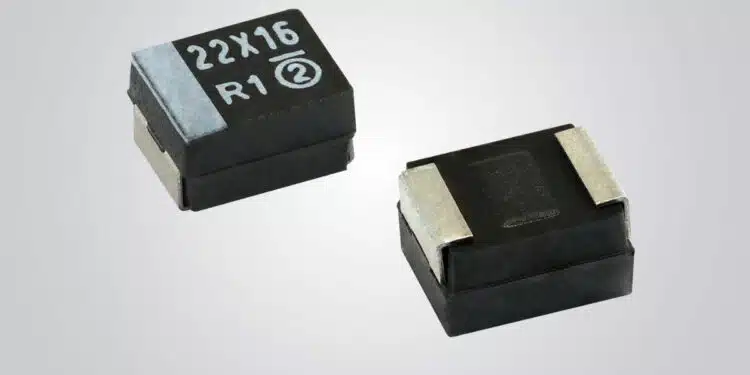Vishay released Tantamount™ SMD low 0.005CV DCL tantalum capacitors that combine a robust design with low DCL leakage current and stringent testing specifications to ensure reliable detonation in harsh environments.
Vishay Intertechnology, Inc. introduced a new series of Tantamount™ surface-mount solid tantalum molded chip capacitors designed specifically for electronic detonation systems. Combining a robust mechanical design with low leakage current (DCL) and stringent testing specifications, Vishay Sprague TX3 series devices deliver enhanced performance and reliability over commercial tantalum capacitors and MLCCs.
With low DCL values of 0.005CV — and the high energy density of tantalum compared to other capacitive technology — the capacitors released today deliver more energy to ensure proper ignition. This makes them ideal for remote detonation systems with reliable discharge requirements in mining and demolition applications. The devices’ tantalum anode technology, combined with Vishay’s best in class dielectric formation, ensures stable electric performance in these harsh environments.
To ensure reliability, TX3 series capacitors are tested to more stringent criteria than standard commercial offerings. Each part is 100 % surge current tested using standard screening methods, and undergoes two additional screenings for key electrical characteristics to eliminate lot to lot variations. Providing a robust solution, the devices’ capacitive element and lead frame are encapsulated by hard plastic resin. Compared to MLCCs, they offer higher shock (100 g) and vibration (20 g) capabilities in accordance with MIL-STD-202.
Available in the B (EIA 3528-21) and C (EIA 6032-28) case sizes, the TX3 series offers a capacitance range from 10 µF to 100 µF over voltage ratings from 16 V to 25 V and a capacitance tolerance down to ± 10 %. The devices provide ESR from 0.700 W to 2.3 W at +25 °C, ripple current to 0.438 A, and high temperature operation to +125 °C. Featuring lead (Pb)-free terminations, TX3 series devices are RoHS-compliant, halogen-free, and Vishay Green.
Samples and production quantities of the new solid tantalum capacitors are available now, with lead times of 10 to 12 weeks.
Features
- Enhanced performance for electronic detonators
- Low DCL for battery (remote / wireless) applications
- More stringent testing specifications on key electrical characteristics
Applications
Electronic detonation systems
































